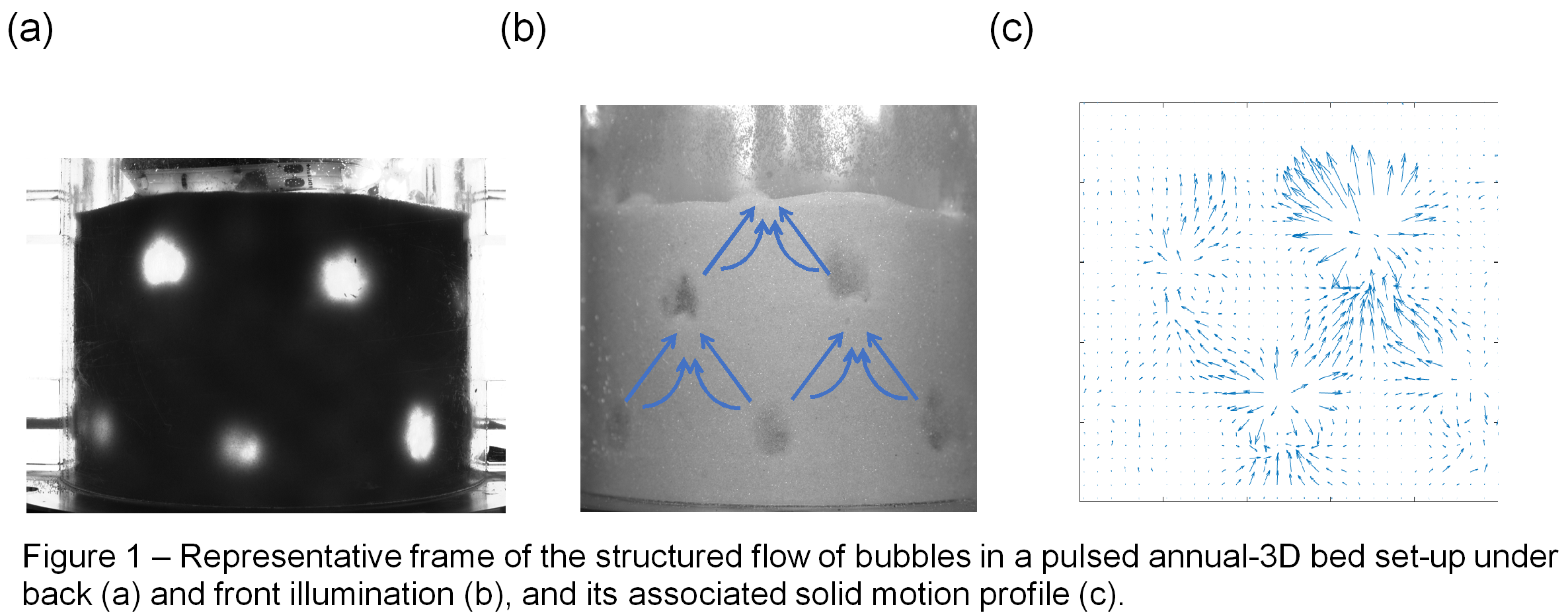(68e) Particulate Flow Dynamics in Structured Gas-Solid Fluidized Beds
AIChE Annual Meeting
2020
2020 Virtual AIChE Annual Meeting
Particle Technology Forum
Fluidization: Circulating Fluidized Beds and Fluidized Beds Experimental Studies
Monday, November 16, 2020 - 9:00am to 9:15am
Such a regular array of bubbles is fully scalable and predictable, providing the potential to bypass operational challenges and intensify many solid processes. We have demonstrated the capability to replicate similarly structured bubbles in a cylindrical geometry, extending its appearance from a flat-2D to an annular-3D configuration, while maintaining its degree-of-order and controllability over gas bubbles. Over the last few years, results from our experiments and simulations have demonstrated that operation under such a flow structure would allow us to control bubble properties, such as size, residence time, and separation with unusual precision [3-5]. On the other hand, particles move and bridge bubbles in different arrays, but also impede coalescence of adjacent bubbles, Overall, an ordered macroscopic network of particulate flow paths emerges, which is coupled to the movement of the bubbles.
In this contribution, experimental results are shown to investigate the spatiotemporal coupling between solids and rising bubbles, as seen in Fig.1. Comparisons of particle image velocimetry (PIV) measurements across oscillations at different conditions and bed heights, as well as CFD-DEM simulations, provide insights into the processes of formation, propagation, and collapse of dense solid regions. We also discuss the evolution of short-range and long-range solid motion over different arrays, and their impacts on the stability of macroscopic patterns. These results form a theoretical basis for future developments in process intensification of fluidized beds.
[1] M.-O. Coppens, J.R. van Ommen, Structuring chaotic fluidized beds, Chem. Eng. J., 96 (2003) 117-124
[2] J.R. van Ommen, J. Nijenhuis, & M.-O. Coppens, Reshaping the structure of fluidized beds, CEP, (2009), 49-57.
[3] K. Wu, L. de Martín, M.-O. Coppens, Pattern formation in pulsed gas-solid fluidized beds - the role of granular solid mechanics. Chem. Eng. J., 329 (2017) 4-14.
[4] K. Wu, L. de Martín, L. Mazzei, M.-O. Coppens, Pattern formation in fluidized beds as a tool for model validation: a two-fluid model based study, Powder Technol., 295 (2016) 35-42.
[5] K. Wu, V. Francia, & M.-O. Coppens. Dynamic viscoplastic granular flows: A persistent challenge in gas-solid fluidization, Powder Technol., 365 (2020) 172-185.
